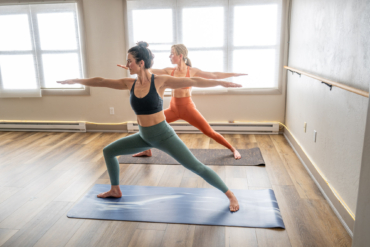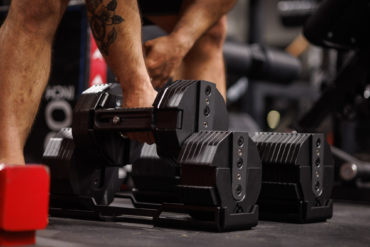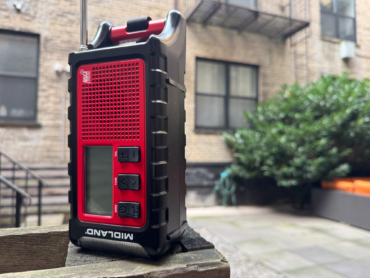The Polar Vantage M2 played a part in helping athletes return to form after overcoming injuries and illness. We sought their advice on a winning mindset to overcome obstacles and how they use the multisport watch for training.
There can be a disconnect between how you perceive an effort and how you perform, especially after a setback. Using a multisport watch can help you make a more informed evaluation of your progress and help read your body’s feedback.
We talked to international athletes as part of Polar’s Come Back Stronger campaign with a message that “the comeback is always greater than the setback.” Each has a unique comeback story and incorporates data from the Polar Vantage M2 into their return.
Rest days are part of any healthy training plan. The Vantage M2 keeps an eye on sleep and recovery, which is harder to mentally track and compare to previous metrics than exercise. And that holistic approach was something echoed by the athletes we talked to, especially since many are accustomed to performing at the highest level of their sport.
Learn More About the Polar Vantage M2 SportswatchMeet the Athletes
- Gwen Jorgensen: Olympic champion triathlete/professional runner
- Kikkan Randall: Olympic champion cross-country skier and cancer survivor
- Sarah Piampiano: Ironman triathlon champion and new mom
- Shane McElrath: Professional Supercross rider
Polar Flow: Track Training and Rehabilitation
A software companion to the watch, Polar Flow collects and analyzes your training data. It tracks your times, training load, and recovery. And it can use your fitness level to create a training plan for a variety of performance goals.
We asked these elite athletes how the Polar Flow tracking available from the Vantage M2 watch helped them with training. We highlighted the responses that show the different roles that data played in their return to sport.
Kikkan Randall: It helps me see the trends in my training, track improvements, and pull together the important life metrics like sleep that are an important piece of the picture. When I was working my way back into shape after my cancer treatment, it was really helpful to see my progression through my Polar Flow data.
I also used the Polar Flow marathon training program to help guide my training for the 2019 New York City Marathon, which was my big comeback goal after my cancer treatment.
Sarah Piampiano: When I was pregnant, I stayed on a flexible training plan that was written by my coach until I was about 8 months pregnant. We recently welcomed my son, Harrison, on February 28, 2021, and so I am just going through my process of returning to training.
Over the past 2 months, the thing I have used my Polar for the most is tracking my sleep and recovery. Since having Harrison, my sleep scores and recovery scores have fallen dramatically.
It has made me much more aware and attentive to my need to recover and sleep — and how my capacity to recover with a new baby may impact how I will need to approach my training going forward. I don’t think I have had a positive ANS score since Harrison was born, which suggests that my body is under quite a bit of stress, even though I am not training.

Recovery Tracking & Perceived Strain
By tracking exercise and recovery with the Polar Vantage M2, athletes will receive data-backed feedback rather than rely on their own perception. Stress, or overreaching during a workout, can linger and require more recovery.
Conversely, days of less activity will show up as “Detraining” and give a heads up to the athlete that they can push themselves in the next workout.
Gwen Jorgensen: My Polar smartwatch is usually a day or week in front of how I feel. When my Vantage M2 tells me I’m overreaching, a day or two later I usually notice fatigue. I love being able to use my watch to help me in a return to run, especially after I was pregnant.
Sometimes it is okay to overreach for a day but it’s a great reminder to also take recovery and not build too quickly when coming back from injury or pregnancy.
Shane McElrath: On a consistent training schedule, I can actively pay attention to my training loads as well as the Recovery feature in the Polar Flow app as a means of confirmation when my body needs some recovery.
SP: I think the recovery feature is consistent with how I am objectively feeling about 80% of the time. What I mean by that is — even prior to pregnancy — there are times when I feel exhausted and lethargic, but I actually am reasonably well-recovered and my training goes very well.
And there are other times when I feel great, but my watch will say I am under-recovered and actually, I end up feeling and performing poorly in training. I would say that if I wake up feeling tired and my watch says I am well recovered, I think it opens the doors for me to give the day more.
Advice on Returning to Form
Of course, the Polar Vantage M2 is just a tool for training. And during comebacks, it’s best to temper expectations and not compare recent performance to personal records. These Polar athletes made conscious efforts to focus on short-term success.
KR: The magic is in being consistent and taking small steps each day that lead to big gains. The days themselves may not feel great, but keep putting in the small efforts and you will be amazed how the time flies by and the pyramid builds.
Finding small successes to keep the inspiration up really helps. That’s why I love checking my workout data on Polar Flow — there is always something I can be proud of.
GJ: When I was returning to running after giving birth to my son, my expectations for the return were not at all in line with what my body would allow me to do. For returning to running, I like to throw out the calendars and not focus on trying to get back to a certain race or by a certain time. Instead, focus on getting back healthy.
My first run back was only 15 minutes where I ran for 4 minutes at a slow pace, and then walked for a minute and did that three times. I like to start a progression such as a run-walk for a week at a time before I try to progress.
Sometimes you feel great the first few runs, but your tendons and bones may not be able to keep pace with your cardio long-term.
SM: When experiencing a setback, I think it’s very important to assess the situation. Was it inside or out of your control? I would encourage them to assess it back as far as they can.
Build your base stronger than it was so that you have fewer areas of instability. And, in turn, that will make you stronger for longer.

Allow Room for Adjustment (and More Rest)
The Polar Flow feedback assigns statuses, like “Maintaining,” “Productive,” and “Overreaching” to let athletes know how hard they are training. We asked the athletes whether they ever found a disconnect between such feedback and whether they adjusted their training or rest accordingly.
KR: I’ve experienced both ways! Sometimes I kept pushing and didn’t use the data as a guide — and ended up overdoing it. Each time I had to spend more time digging myself out of the hole.
Later in my career, I got smarter and started using the data to catch myself before I went over the “Productive” line. I learned an extra day of rest can be so much more powerful than cramming in another low-quality session because you’re tired.
GJ: I like to listen to my body always, and use my Polar as a backup to remind me what to focus on. If I feel an injury come on, I quickly will take a day or two off.
It is always better to deal with injuries at the start as they will likely go away quicker than if you wait to try to solve the issue. Missing a day or three will not impact your fitness.
SP: So much of training is about trial and error. Making progress and creating growth as an athlete (of any level) requires placing stress on the body and then allowing your body to adapt.
Sometimes you place too much stress on the body too soon or don’t allow enough recovery if a breakthrough has been made. Right now, as I make my way back into training, we will be working in 7-day blocks and evaluating how my body is responding every few days.
Traning by HR Zones
One method of training and building endurance is to stay keep the majority of an exercise within a range of heart rates. The Polar Vantage M2 allows you to find your max and resting heart rates to assign zones for your training. Then, while running and exercising, the watch can alert you when you leave a certain zone’s threshold.
KR: I have used HR zones since high school when my cross-country running coach gave me my first heart rate monitor and taught me about how to use the zones to get different effects from my training. The zones have helped me from going too hard on the easy sessions and maximize my race pace efforts at the higher end.
GJ: I love using my Polar because it is able to give me reliable HR data on my wrist without needing an HR monitor strap. I use HR the most when I got to altitude. At altitude, especially the first week, it is really easy to go too fast too soon.
SM: I train by HR zones. In my profession, Supercross and Motocross Racing, almost all of my seat time on the motorcycle is zone 5 heart rate. To balance our high-intensity time, we must be very precise with our off-the-bike training to maximize recovery and productivity in the rest of our training schedule.

Utilize Multisport Tracking for Cross-Training
Everything you do isn’t training, but it still adds up. The everyday Polar smartwatches will follow your movements and efforts to keep an eye on those activities. Additionally, the Polar Vantage M2 has settings to track dozens of different sports, even differentiating some indoor and outdoor sports.
GJ: I love tracking walks with my Polar. When I was coming back after giving birth to my son, Stanley, I would go for hour-long walks. This was time on my feet and a great way to help rebuild bone and tendon health while I was still recovering.
Once I started running again, I still tracked my afternoon “doubles,” which were walks. Walking can aid in increasing fitness when our body isn’t ready to handle the load of running.
SM: I make sure to load all my activities for my training onto my watches that I use: Other outdoor, other indoor, indoor rowing, indoor cycling, cycling, mountain biking, running, etc.
SP: I primarily use my watch for running and open water swimming, and less for cycling. During my pregnancy, I was doing a lot of walking and hiking and was counting that as part of my training.
My husband and I also got a new puppy at the end of November, and I was curious to know how many miles I would walk him in a month. It turns out I walked Rangeley about 60 miles in December, which isn’t insignificant!
Insight From a Comeback
Some final notes from Polar athletes coming back stronger.
KR: I learned how much I love to be active every day and gained so much gratitude for being able to stay active. I like to say I don’t have mediocre days anymore because every day I can be out doing something is a gift!
GJ: I learned to be patient. I learned to find outside distractions. And I learned to be kind to myself. When you are going through a comeback, it often feels like you aren’t making any progress, but trust the process, and I promise you are making huge gains.
SM: I’ve learned through each of my setbacks that it’s OK to fail. We all make mistakes and that’s how we grow. When we have a setback, that means we’ve hit a weak spot and that it needs to be addressed. We can strengthen those areas to reach new levels we’ve never been. Keep your head up!
SP: I feel like I am behind the ball versus where I would normally be this time of year, and so the natural inclination is to go full-steam ahead. It will be important for me to monitor things like my sleep and recovery using my Polar watch, as well as watch my heart rate, in training and at rest to understand how my body is responding to the stress.

Polar Vantage M2
The Polar Vantage M2 used with the Polar Flow software offers a plethora of data. How you use it can vary on your needs and where you are in your own training.
It starts with simple GPS exercise tracking with heart rate monitoring. From there, it continues to measure the body’s response to the training workload as well as any added movements, like running after a toddler or walking the dog. This provides a more complete dataset for the watch to assess your workload compared to previous efforts.
The athletes we talked to all had different needs and uses, yet used the combo of recovery and training data to help them with their comeback. Of course, you may not be returning to form and just want to unlock more of your potential.
If you are looking for an everyday multisport watch that can monitor your cardio training and recovery, the Polar Vantage M2 is worth a look.
Learn More About the Polar Vantage M2 SportswatchThis post is sponsored by Polar. Find out more about the Vantage M2 here.










